
views
X
Expert Source
Tony HoangLandscaping Manager
Expert Interview. 29 September 2023.
Use a weed wacker to edge the border of your lawn wherever it meets things like garden beds, patios, pathways, and driveways. Just make sure to take the right safety precautions and use the right techniques to avoid accidents and get great results!
Lawn Prep
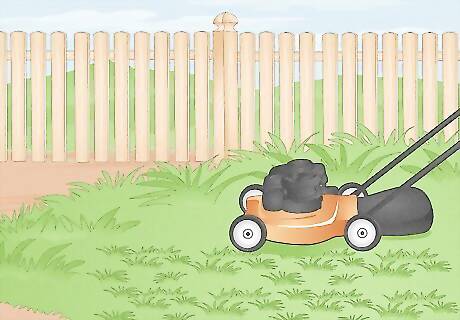
Mow your lawn before you edge it. Mowing your lawn gives the grass a neat, uniform look. Then, all you have to do is clean up the edges with your string trimmer to finish up the job! If you don’t mow your lawn right before you edge the borders, the grass along the edges can end up being shorter than the rest of the grass, so it won’t look good.

Trim the surface of the grass along the edges with your string trimmer. Most mowers don’t trim the grass all the way up to the borders of the lawn, so you’re probably going to be left with some longer grass along the edges after mowing. Start at the left side of the edge and hold your weed wacker normally. Turn it on so the string starts cutting the longer blades of grass, then slowly walk your way to the right along the whole edge until you trim all the longer grass. If your mower does trim grass all the way up to the borders and it all looks uniform and neat to you, go ahead and skip this step. If your string trimmer is shooting grass clippings into a garden bed or another area you don’t want them, walk the opposite direction so it shoots them back into your yard.
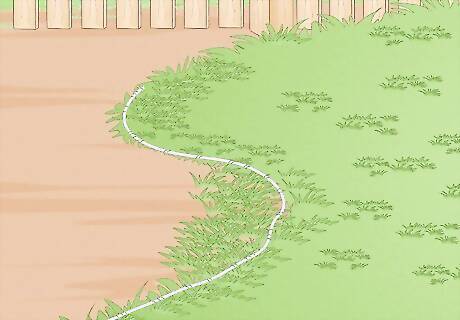
Plan the path for edging. If it’s your first time edging, mark the path out along the grass with tape, a hose, or rope. If the borders of your lawn are already edged, you can just follow the existing lines and clean them up. Where the grass meets hard surfaces like sidewalks, driveways, and patios, just use the line of the concrete to guide your cutting path. Generally, you want to edge your lawn where it meets garden beds and along the perimeters. Check for buried hazards like wires, pipes, rocks, and glass shards along the path and remove or avoid them while you edge. You can call 811 and find out about the utility lines and avoid damaging them. Be careful while working in the corners where you have the sprinkler heads.
Edging
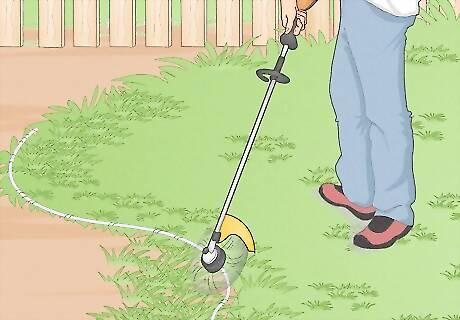
Hold the trimmer at a 90-degree angle so the string spins top to bottom. Flip your trimmer so the top guard is facing you. Lower the spinner line as needed until it just barely comes into contact with the grass and soil along the border of your lawn you want to edge. If you’re edging along a hard surface, like a driveway, hold the trimmer so the line is right where the grass meets the concrete. Before you start your trimmer, practice moving the head along the edge and keeping it level. This helps you get the motion down before you start actually cutting along the border of the lawn, so you get a nice even edge. Wear long pants, closed-toe shoes, gloves, and safety glasses or goggles to protect yourself from flying debris and the spinning string on your trimmer. Don’t edge a lawn near children, pets, or bystanders. You might send debris flying their way!
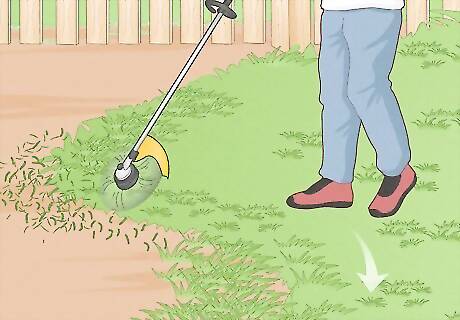
Work in the opposite direction from the direction the string spins in. That way, the string trimmer throws the debris away from the cut path. Most string trimmers spin clockwise, so work from left to right. However, if yours spins counterclockwise, work from right to left instead. You may want to switch which side of the lawn’s edge you stand on from time to time to avoid sending debris flying towards things like cars or the side of your home.
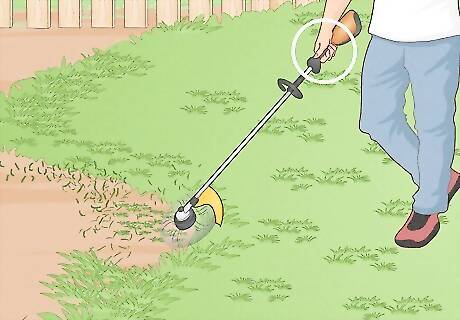
Hold the trimmer steady and level as you slowly walk the edge. Turn your string trimmer on so it starts cutting along the edge of the grass and into the soil. Slowly start walking along the edge, keeping the string trimmer as level as possible to cut an even edge. Tucking the motor of the trimmer under your arm can help you hold it steady. Avoid swinging the string trimmer with your arms. Hold your arms still and move the trimmer along as you walk.
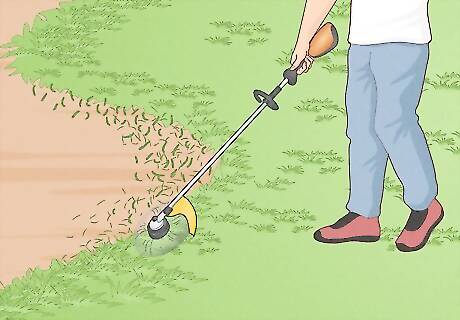
Walk slowly and let the weight of the trimmer do most of the work. Keep your back towards the direction the trimmer is tossing the debris in. Walk forward along the planned edge while continuing to hold the trimmer steady and at an even level. If you’re edging along a hard surface, it’s easiest to stand on the concrete side. If you’re edging along a garden bed or perimeter, it’s best to stand on the grass side. You can go back over areas if you make uneven cuts or want to alter the edging line slightly.
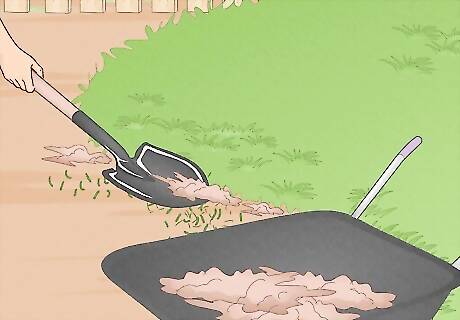
Shovel up loose soil, turf, and other debris along the edges as you go. Dump it into a wheelbarrow and dispose of it properly. This lets you clearly see the edges while you work. It also reduces the amount of dirt and other debris that you can churn up and send flying while you’re edging. In most cases, all this debris can go in your yard waste bin. However, make sure you know your local regulations before you just dump everything in there.
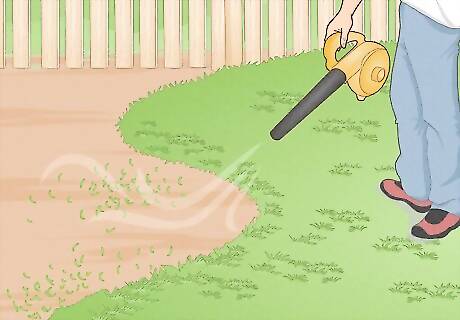
Blow clippings and loose dirt away from fresh edges with a leaf blower. This final step is optional, but it can really make the edges of your lawn pop. Walk a small blower along all the edges you just cut to blast away loose dirt and grass clippings. This is also a great time to do some other yard maintenance, such as trimming bushes and shrubs. You’ll love the polished final look!




















Comments
0 comment